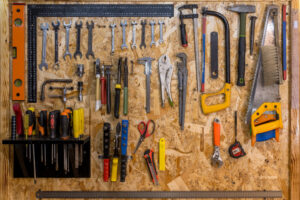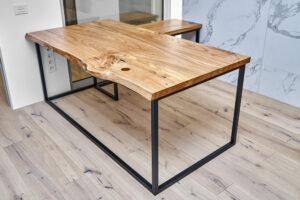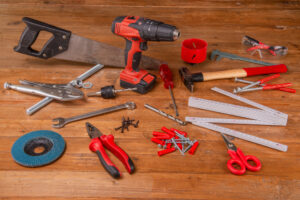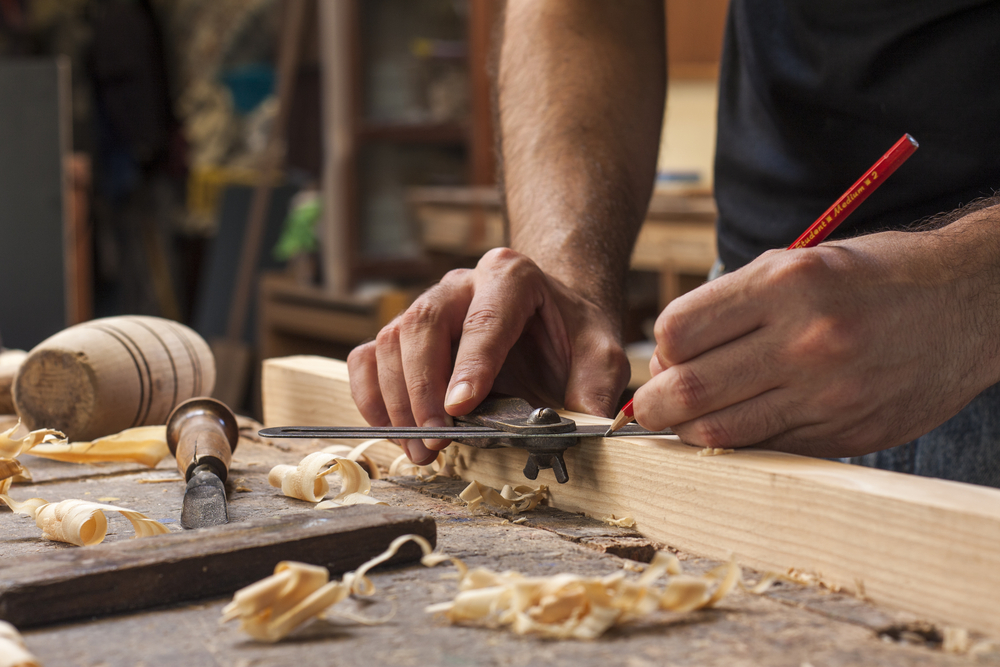
Proper measurement and precise cutting are essential for successful woodworking projects. Whether you are a beginner or an experienced woodworker, following accurate measurement and cutting techniques is crucial. It ensures that your pieces fit together seamlessly and minimises the need for additional sanding or corrections. By measuring and cutting wood accurately, you can achieve stronger bonds and professional-looking results.
Key Takeaways
- Accurate measurement and marking are vital for precise wood cutting.
- Use essential tools like rulers and tape measures to ensure accurate measurements.
- Consider using a razor blade or box cutter for precise marking.
- Understand different woodworking cuts, such as crosscuts and rip cuts, to achieve desired results.
- High-quality clamps, like those from Jorgensen, are crucial for strong bonds in your woodworking projects.
Tips for Measuring and Marking Wood
Before making any cuts, it is vital to measure and mark your wood accurately. Double-checking your measurements using a ruler or tape measure can help you avoid costly mistakes and ensure precise cuts. Here are some essential tips for accurate wood measurement and marking:
- Use the right tools: A ruler or tape measure is indispensable for measuring wood accurately. Ensure that the measurement tool is sturdy and provides clear markings to ensure precision.
- Double-check measurements: Measure twice, cut once! Taking the time to verify your measurements can save you from costly errors. It’s always better to spend a few extra moments confirming your measurements than to regret it later.
- Choose the appropriate marking tool: While a pencil is suitable for most marking tasks, for precise measurements, consider using a razor blade or a box cutter. These tools create a slight cut that relieves the wood grain and reduces the chances of splintering.
- Consider the direction of your cuts: When marking wood, it’s important to mark it on the appropriate side of the line. This ensures that your cuts align with the intended dimensions and maintain accuracy throughout the project.

Essential Woodworking Cuts
In woodworking, understanding the various types of cuts is essential for achieving precise and professional-looking results. Let’s explore the five main woodworking cuts that every woodworker should be familiar with:
- Crosscut: A crosscut involves slicing across the grain of the wood. This type of cut is typically made using a mitre saw or table saw. Crosscuts are commonly used for cutting boards to length or trimming pieces for joinery.
- Rip Cut: A rip cut follows the direction of the wood grain. It is used to cut boards by width, making it an ideal cut for creating straight-edged boards or ripping materials to the desired size. A table saw or circular saw is commonly used for rip cuts.
- Resawing: Resawing involves cutting along the edges of boards to create thinner pieces. This technique is commonly used to create veneers or thin boards for intricate woodworking projects. A bandsaw or a dedicated resawing machine can be used for this type of cut.
- Mitre Cut: A mitre cut is an angled cut made across the face of the wood. It is often made at 45 degrees, although other angles can be used as well. Mitre cuts are commonly used for creating mitre joints, such as those found in picture frames or corners of door frames. A mitre saw or table saw with a mitre gauge is typically used for making mitre cuts.
- Curved Cut: Curved cuts are intentionally non-straight cuts used to create curved or irregular shapes in wood. They can add visual interest to projects and are commonly used in decorative elements or furniture making. Bandsaws or jigsaws are often used to make curved cuts.
Time to get clamping
Once you have measured and cut your wood accurately, it’s time to assemble your project using clamps. High-quality clamps are essential for ensuring strong bonds between wood pieces. The Jorgensen brand offers a wide range of clamps suitable for various woodworking applications. Bar clamps, pipe clamps, C-clamps, hand and spring clamps, mitre clamps, corner and framing clamps, and vices are among the options available. Choosing the right clamps for your project is crucial for achieving professional results.
When it comes to woodworking, efficient wood-cutting techniques go hand in hand with the proper application of clamps. Once your carefully measured and cut wood pieces are ready to be joined, clamps are your go-to tools for creating strong connections. The Pony Jorgensen brand offers a variety of high-quality clamps designed for different woodworking applications.
Bar clamps are versatile and provide even pressure distribution, making them suitable for a wide range of projects. They come in various sizes to accommodate different workpiece dimensions. Pipe clamps, on the other hand, are ideal for larger projects and can be easily extended by adding more pipes. C-clamps are compact and perfect for holding smaller pieces securely in place.
Hand and spring clamps are convenient for quick and easy setups. These clamps can be operated with one hand, leaving your other hand free to position the workpiece. Miter clamps are specifically designed for securing mitre joints at precise angles, while corner and framing clamps are essential for assembling frames and boxes.
Vices are another important type of clamp for woodworking. They are typically attached to a workbench and provide a stable and secure grip for various woodworking tasks. Whether you need to hold a workpiece for cutting, drilling, or carving, a vice is a reliable tool that ensures accuracy and safety.
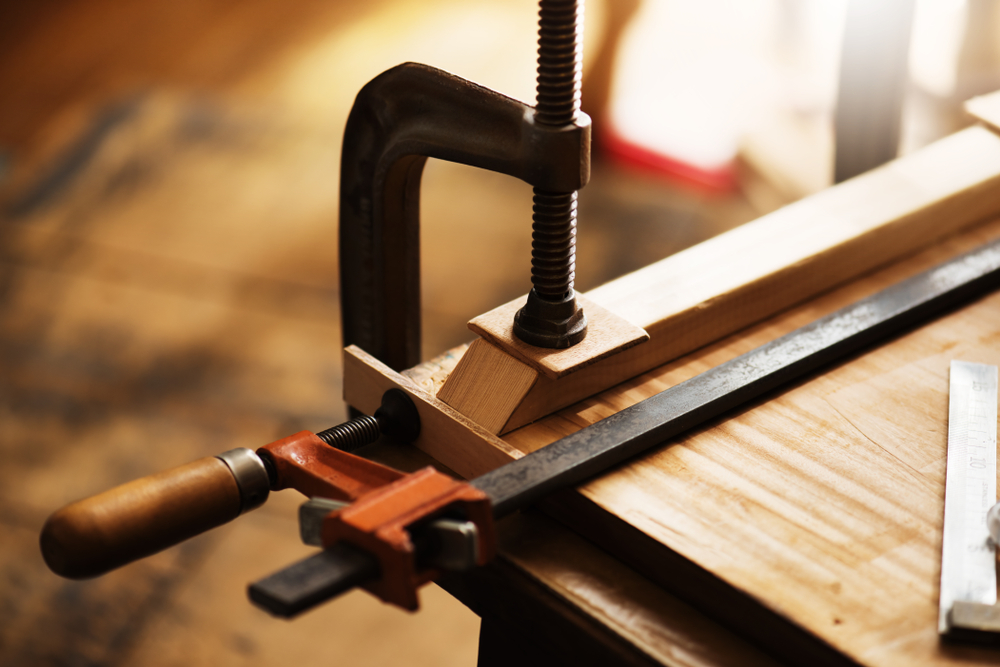
Conclusion
By following these tips for measuring and cutting wood accurately, you can improve the quality and precision of your woodworking projects. Taking the time to measure, mark, and cut your wood correctly ensures strong bonds and professional-looking results.
Using the right tools, understanding different woodworking cuts, and selecting high-quality clamps are crucial steps in achieving success in your woodworking endeavours. With practice and attention to detail, you can become proficient in measuring and cutting wood accurately, making your woodworking projects stand out.
Remember, precision in woodworking is key. Proper measurement and precise cutting techniques will not only save you time but also ensure that your pieces fit together seamlessly. Don’t rush the process – take the time to measure twice and cut once. The results will speak for themselves. Happy woodworking!
FAQ
Why is accurate measurement and cutting important in woodworking?
Accurate measurement and cutting are essential in woodworking to ensure seamless fits, minimize the need for corrections, and achieve professional-looking results.
What tools should I use for measuring and marking wood?
You can use a ruler or tape measure for measuring and a pencil or razor blade for marking. The slight cut made by a razor blade reduces the chances of splintering.
What are the different types of woodworking cuts?
The main types of woodworking cuts include crosscut, rip cut, resawing, mitre cut, and curved cut. Each has its specific purpose and technique.
How do I choose the right clamps for my woodworking project?
The Pony Jorgensen brand offers a variety of clamps suitable for different woodworking applications. Choose the appropriate type of clamp based on your project requirements.
How can I improve the quality and precision of my woodworking projects?
By practising accurate measurement, using the right tools and understanding different woodworking cuts, you can improve the quality and precision of your projects.
- Drill Battery Maintenance: Essential Tips for Cordless Drill Battery Care - February 5, 2024
- Troubleshooting Drill Issues - February 5, 2024
- Quick Drilling Techniques - February 2, 2024



